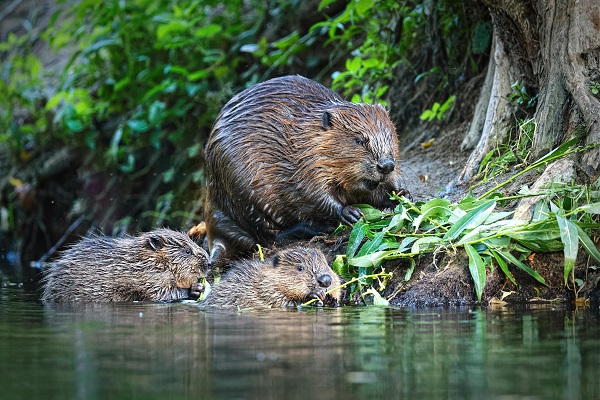 Credit: (Above) Laurent Wies; (below) ANF
Credit: (Above) Laurent Wies; (below) ANF
Today, Thursday 7 April 2022, marks International Beaver Day, an occasion first celebrated in 2009 by an American educational nonprofit group called Beavers: Wetlands & Wildlife (BWW).
BWW chose 7 April as the date of International Beaver Day as it is the birthday of Dorothy Richards (1894 -1985), also known as the "Beaver Woman", who studied beavers at the Beaversprite Sanctuary in the Adirondack Mountains of New York for almost 50 years.
In winter 2021, Luxembourg's Nature and Forest Agency (Administration de la nature et des forêts - ANF) carried out a nationwide beaver monitoring effort in order to record the current status of the distribution of this animal species around 20 years after the first beaver activity was recorded in the Grand Duchy. The ANF found that the population has continued to increase since 2019: exactly 80 beaver territories have been mapped. In 2019, there were just 39. However, other beaver sites may exist in Luxembourg that have remained undiscovered so far. In this context, the ANF is calling for all indications of beaver activity to be reported to the agency via email: biber@anf.etat.lu.
The main areas in Luxembourg where beavers can be found at present are the Upper Sûre Lake and the Alzette, Eisch and Attert rivers. The ANF assumes that the spread will continue, which could prove very positive for Luxembourg's aquatic habitats and the animal and plant species dependent on the latter. The beaver is a so-called key species that brings significant benefits for biodiversity and water conservation. Through their sometimes spectacular building activities on smaller streams, beavers create habitats such as ponds and wet meadows, which are of great importance for countless rare and protected animal and plant species. Through these free renaturation activities of the small streams, beavers also contribute to climate protection, since the wetlands created in this way act as carbon storage.
In individual cases, however, conflicts with human interests can also arise. For these cases, an action and management plan for dealing with beavers in Luxembourg was drawn up together with representatives of all interest groups, which shows both what can be done to protect the beaver and how conflicts can be defused and resolved.
The beaver was extinct in Luxembourg for around 200 years. The animal was persecuted, hunted and finally exterminated for its fur, meat and the castoreum (a glandular secretion which was said to have potency-enhancing and healing effects). As a result of several reintroduction projects in Belgium, the North Eifel (Germany), Saarland (Germany) and along the Upper Moselle Valley (France) in the 1980s and 1990s, increasingly large populations developed, from where individual animals migrated to Luxembourg. About ten years ago, one could start to speak of a small beaver population in the Grand Duchy.
Every year, the two-year-old beavers are driven out of their parents' beaver territories and then go in search of a new territory. Given that the young beavers have been shown to often migrate 20-40 km, sometimes even over 100 km, they can appear anywhere in Luxembourg where there is water and vegetation, as that is all they need. These migrations usually happen in May, when new locations are often settled. Since beavers tend to eat herbaceous vegetation over the summer months instead of felling trees, and are therefore more discreet, the new territories often remain undiscovered until late summer or even autumn. When vegetation dwindles, beavers cut down more trees to get at the thin branches of the crown, which they eat. As a result, their presence at this time of year is more noticeable.









